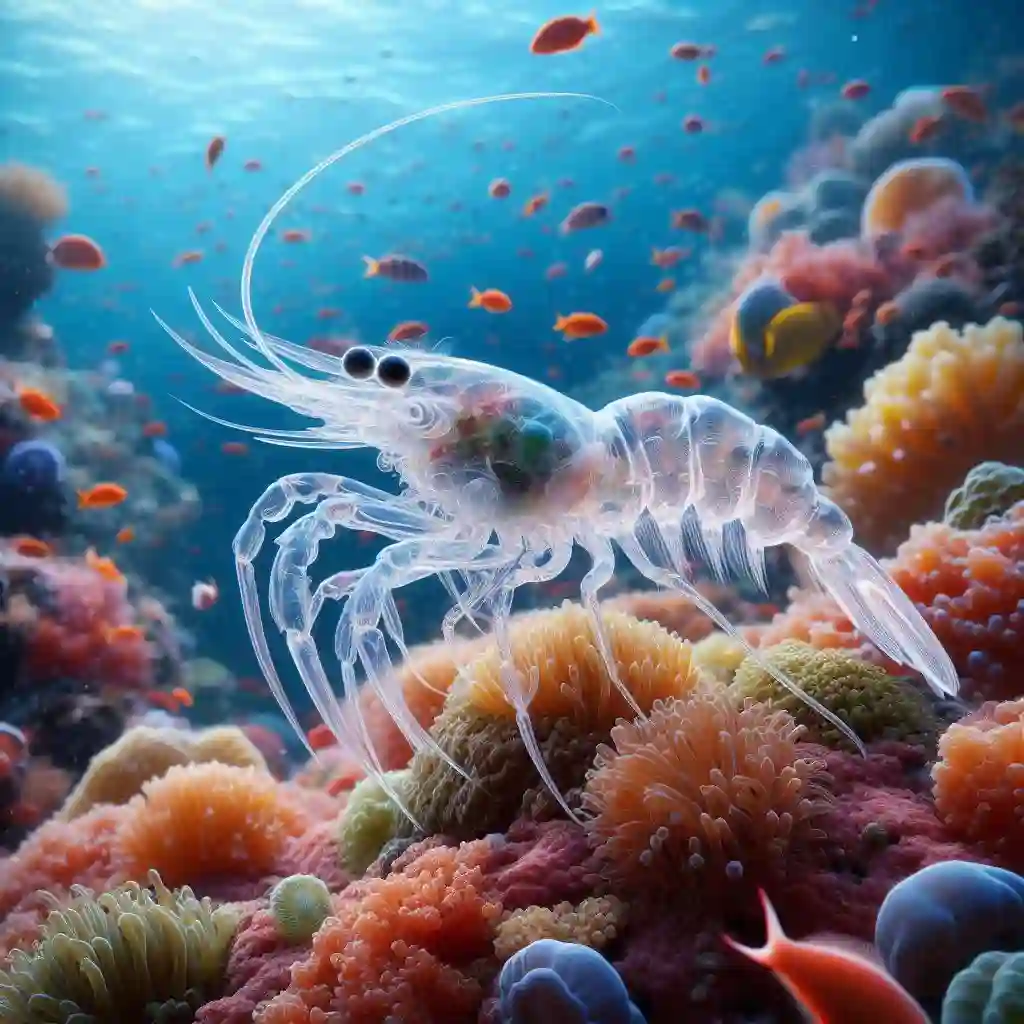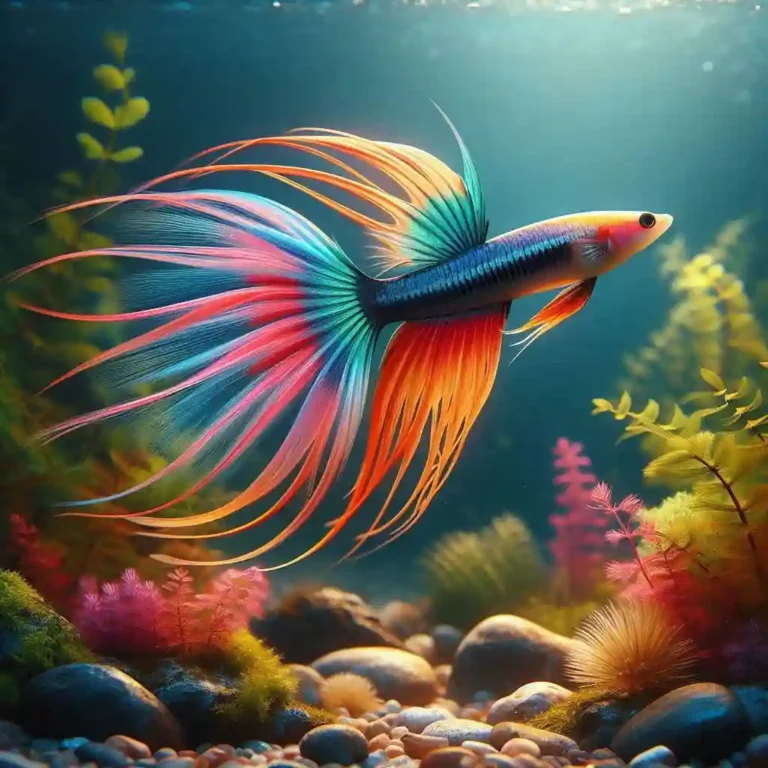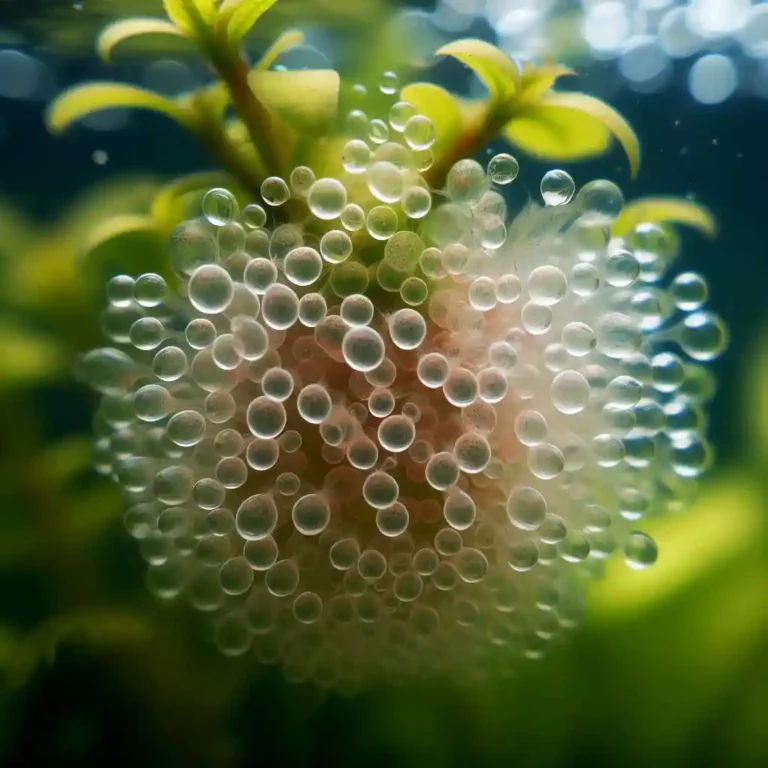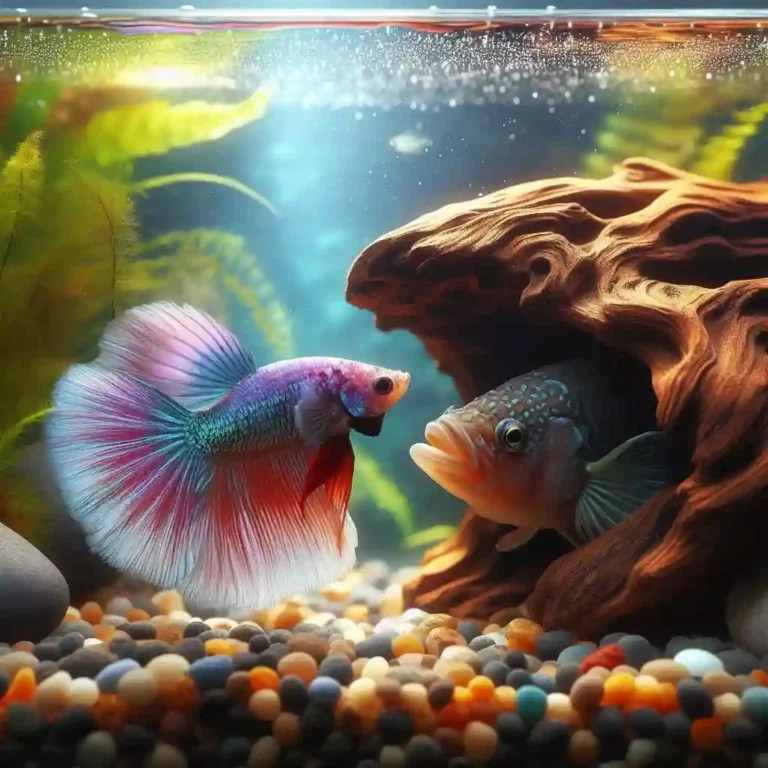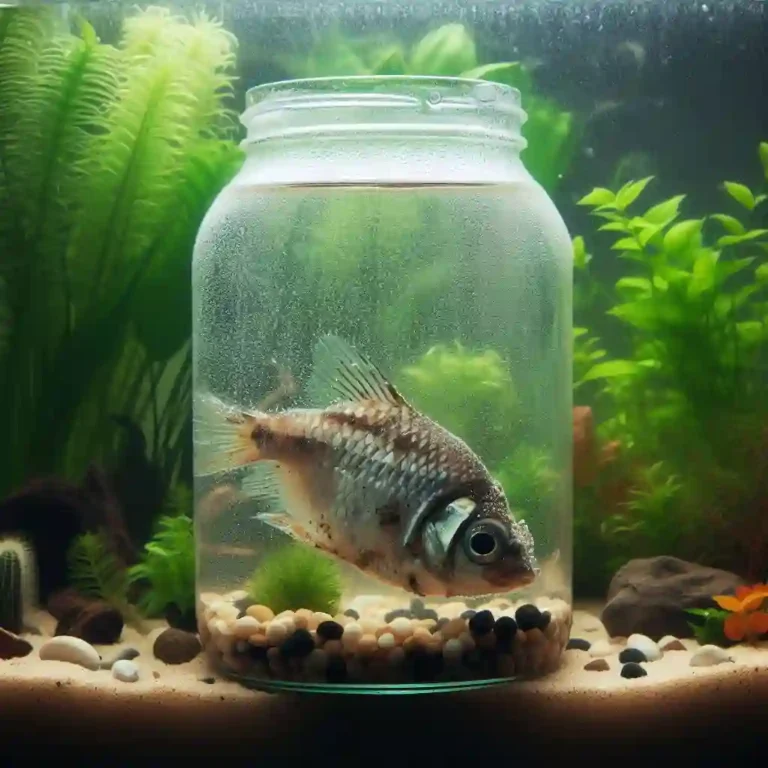Pregnant Ghost Shrimp: What to Expect and How to Prepare
Pregnant Ghost Shrimp: In the fascinating world of freshwater aquariums, few creatures captivate aquarists like the enigmatic ghost shrimp.
The process of breeding ghost shrimp remains shrouded in mystery, leaving many hobbyists wondering how to successfully care for pregnant ghost shrimp and raise their delicate young.
In this comprehensive guide, we’ll delve into the intricacies of pregnant ghost shrimp, providing you with actionable tips and expert advice to help you navigate the breeding process with confidence.
Pregnant Ghost Shrimp: A Quick Guide

Identifying Pregnant Ghost Shrimp:
- Visual Inspection: Observe your ghost shrimp regularly. A pregnant female will have a visible egg sac attached to her underside, which will appear as a yellowish or whitish mass.
- Behavioral Changes: Pregnant females may exhibit changes in behavior, such as reduced activity, hiding more often, or becoming more aggressive when approached.
Breeding and Mating:
- Mating Process: Ghost shrimp will mate in the evening or at night, and the process usually takes around 30 minutes to an hour.
- Egg Development: After mating, the female will store the sperm and use it to fertilize her eggs over the next few weeks.
Caring for Pregnant Ghost Shrimp:
- Provide a Safe Environment: Ensure your aquarium is peaceful, with plenty of hiding places and minimal water changes to reduce stress.
- Optimal Water Conditions: Maintain stable water parameters, with a pH range of 6.5-7.5, temperature between 65°F-75°F (18°C-24°C), and moderate water hardness.
- Nutritious Diet: Offer a varied diet rich in nutrients, such as algae, plant matter, and high-quality commercial foods.
Hatching and Rearing:
- Egg Hatching: After 2-3 weeks, the eggs will hatch, and the larvae will emerge.
- Larval Care: Provide a separate rearing tank with a mesh or screen to prevent the larvae from being eaten by other tankmates. Offer a diet of infusoria or newly hatched brine shrimp.
- Grow-Out: Once the larvae reach around 1-2 mm in size, you can transfer them to a grow-out tank with a more substantial food source, such as commercial fry food.
Ghost Shrimp Mating and Breeding
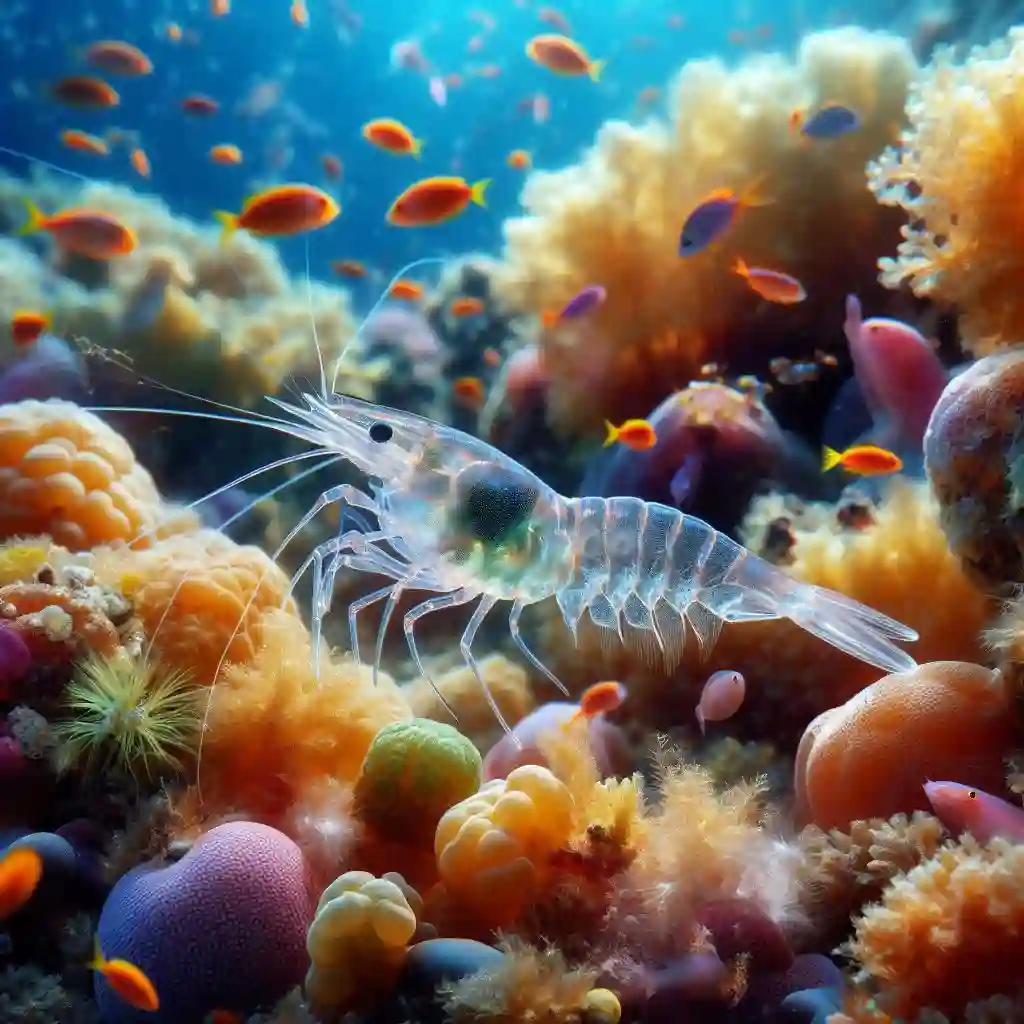
Mating and Courtship
Ghost shrimp mating is a complex process that involves a series of courtship behaviors. Males will perform a ritualized dance to attract females and showcase their fitness. This dance involves:
- Vibratory signals: Males will vibrate their bodies to signal their presence to females.
- Visual displays: Males will display their brightly colored claws and perform a “claw-waving” motion to attract females.
- Chemical signals: Males release pheromones to signal their reproductive readiness.
Breeding Requirements
To breed ghost shrimp, you’ll need:
- A separate breeding tank: A 5-10 gallon tank with a heater (around 22-25°C/72-77°F), a filter, and a substrate (e.g., sand or gravel).
- A ratio of 1:1 or 2:1 (male:female): Introduce the shrimp to the breeding tank, ensuring the males are not aggressive towards each other.
- A varied diet: Provide a nutrient-rich diet, including algae, vegetables, and commercial shrimp food.
- Water quality: Maintain good water quality by performing regular water changes (10-20% every week).
Breeding Cycle
The breeding cycle of ghost shrimp typically lasts around 2-3 weeks:
- Mating: After introduction, the males will start courting the females. Mating usually occurs at night, and the process can take several hours.
- Egg development: After mating, the female will carry the eggs (around 20-30) for about 2-3 weeks. During this time, she will not eat and will focus on caring for her eggs.
- Hatching: The eggs will hatch after 2-3 weeks, and the larvae will go through several molts before reaching adulthood.
How to Identify Pregnant Ghost Shrimp: Signs and Symptoms
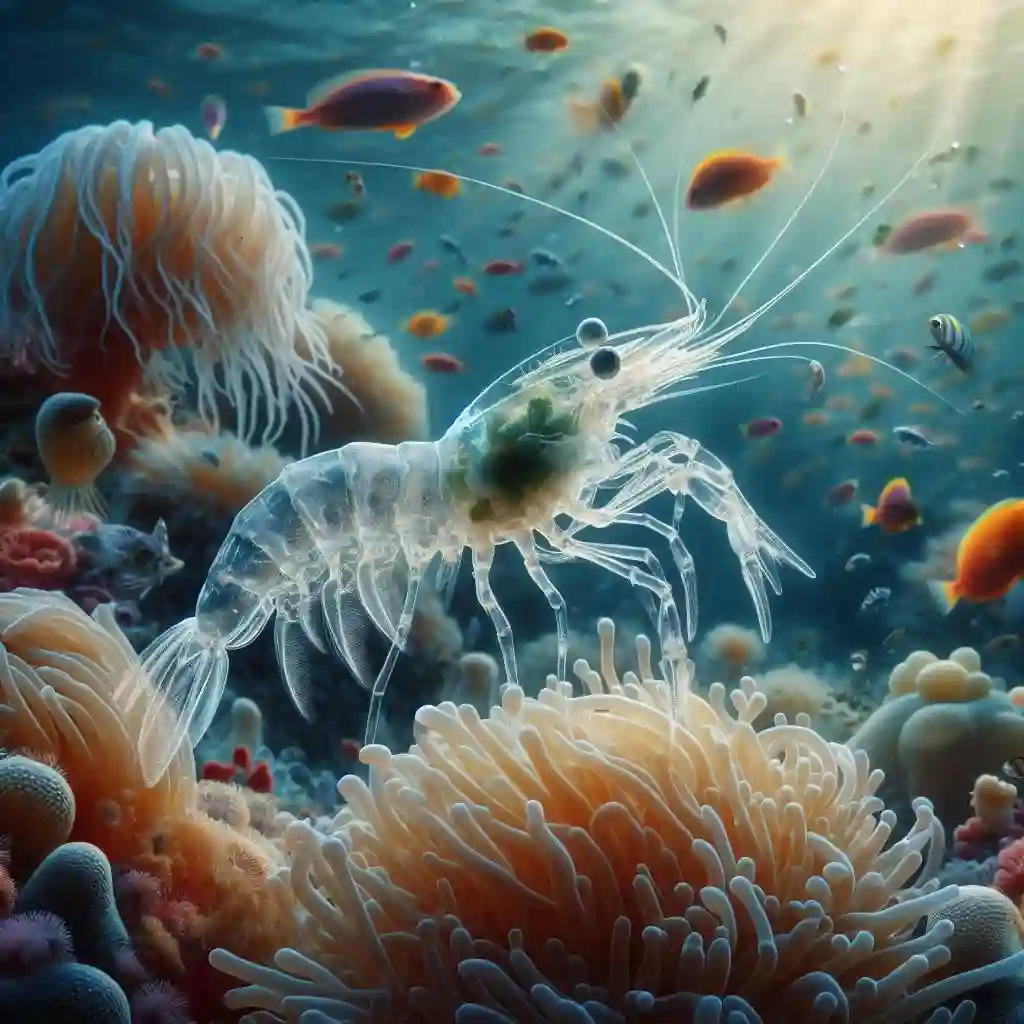
Visual Signs:
- Egg sac: A pregnant ghost shrimp will develop an egg sac, which appears as a yellowish or orange-colored mass on the underside of her abdomen. The egg sac will grow in size as the eggs develop.
- Abdominal swelling: As the eggs develop, the female’s abdomen will swell, becoming more rounded and larger than usual.
- Color changes: Some ghost shrimp may exhibit a slight color change, such as a darker or more vibrant coloration, especially on the abdomen.
Behavioral Signs:
- Reduced activity: Pregnant ghost shrimp may become less active, spending more time hiding or resting.
- Increased hiding: Pregnant females may hide more frequently, especially in plants or under decorations, to protect themselves and their eggs.
- Changes in feeding behavior: Pregnant ghost shrimp may eat less or show less interest in food, as they focus on caring for their eggs.
Other Signs:
- Mating behavior: If you’ve witnessed mating behavior, such as the male’s courtship dance, it’s likely that the female has been fertilized.
- Time since mating: If it’s been around 2-3 weeks since mating, the female is likely to be pregnant.
The Ideal Aquarium Environment for Pregnant Ghost Shrimp
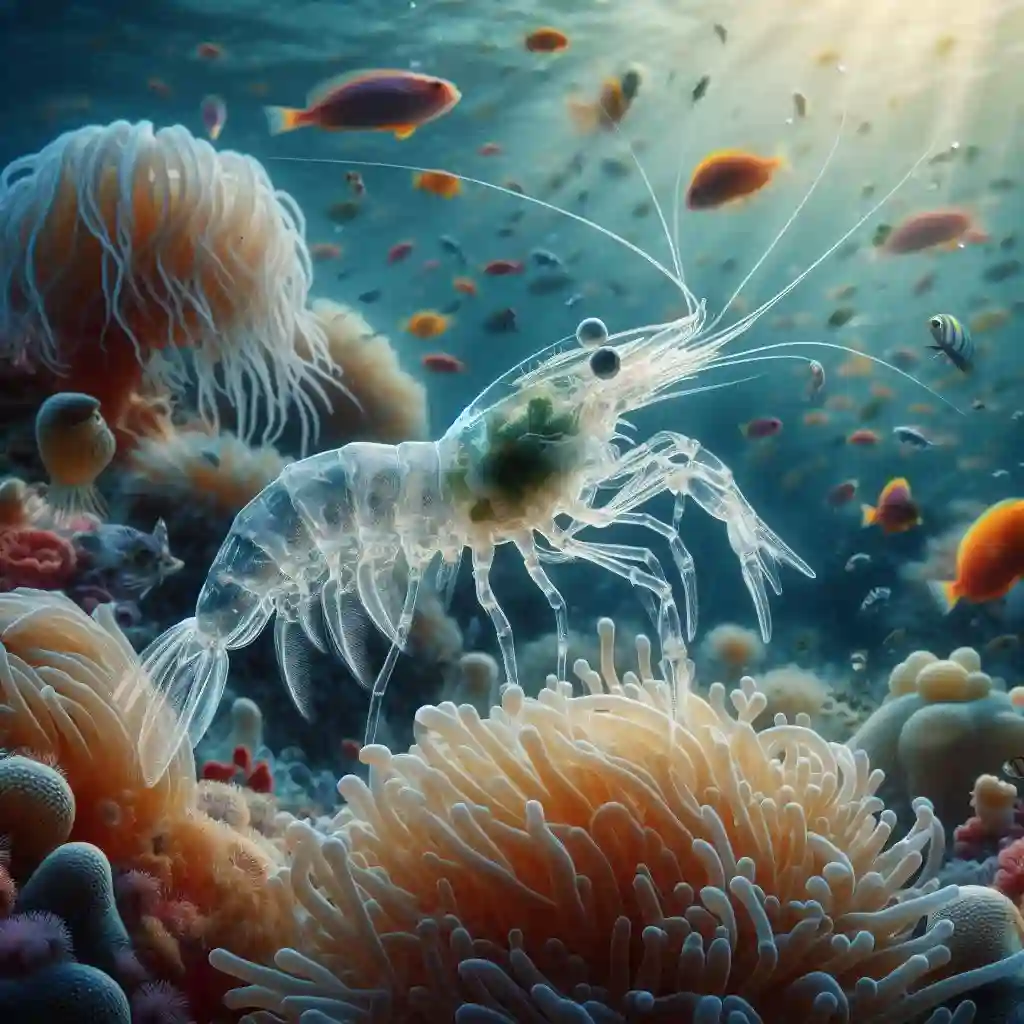
Water Parameters:
- Temperature: Maintain a temperature range of 22-25°C (72-77°F) to ensure optimal breeding conditions.
- pH: Keep the pH between 6.5-7.5, which is suitable for ghost shrimp.
- Water hardness: Maintain a water hardness of 5-10 dGH (degrees of General Hardness) to mimic their natural habitat.
- Water movement: Provide gentle water movement (around 1-2 liters per minute) to simulate the natural flow of their habitat.
Aquarium Setup:
- Tank size: Use a minimum tank size of 5-10 gallons to provide ample space for the shrimp to move around.
- Substrate: Use a nutrient-rich substrate, such as sand or gravel, to support the growth of beneficial bacteria and plants.
- Decorations: Add plants, rocks, and driftwood to create hiding places and visual barriers for the shrimp.
- Water level: Maintain a water level of around 10-15 cm (4-6 inches) to allow the shrimp to swim and forage comfortably.
Water Quality:
- Regular water changes: Perform 10-20% water changes weekly to maintain optimal water quality.
- Monitor water parameters: Regularly test for ammonia, nitrite, and nitrate levels to ensure a healthy environment.
- Beneficial bacteria: Establish a healthy colony of beneficial bacteria to break down waste and maintain a balanced ecosystem.
Nutrition for Pregnant Ghost Shrimp: What to Feed and Why
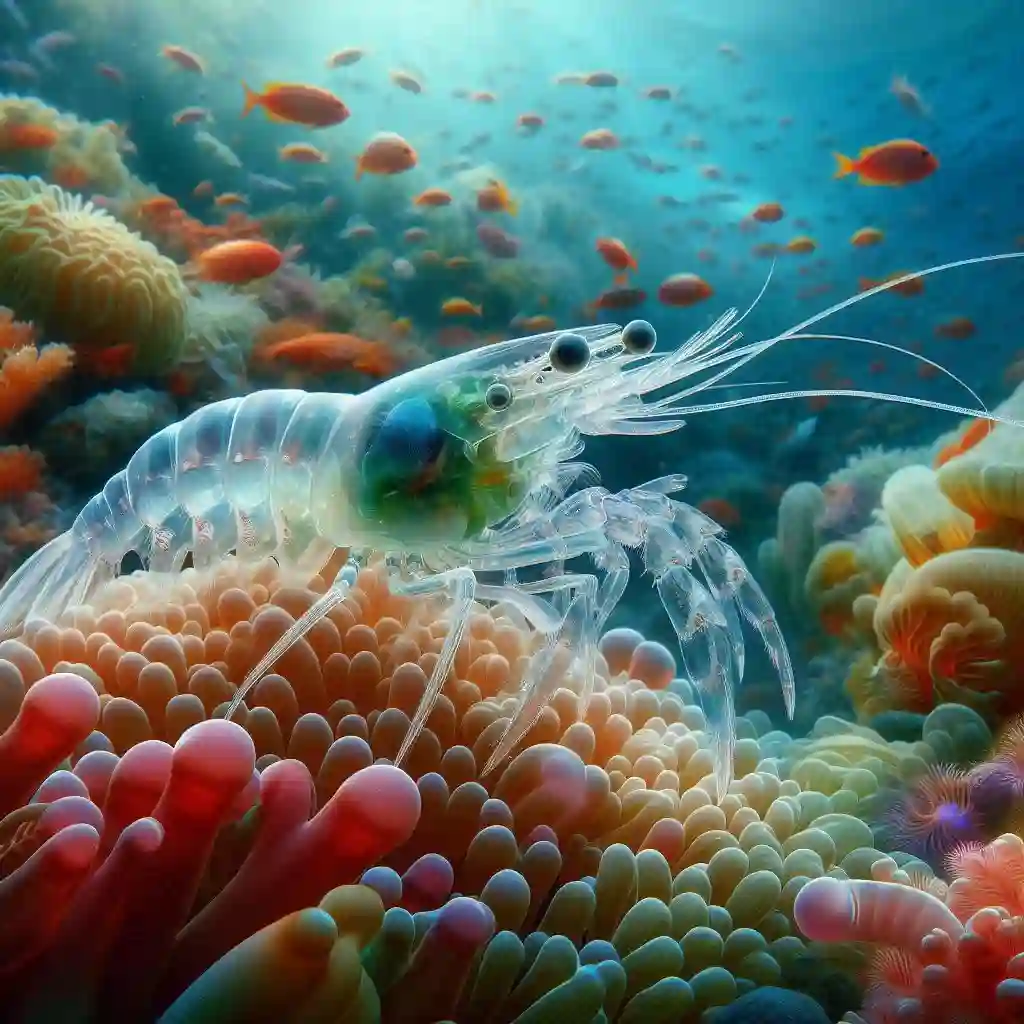
Nutritional Requirements:
- Protein: Pregnant ghost shrimp require a diet rich in protein to support egg development and embryonic growth. Aim for a protein-rich diet with 30-40% protein content.
- Calcium: Calcium is essential for shell growth and development. Provide a calcium-rich diet or supplement with calcium-rich foods like crushed eggshells or cuttlebone.
- Minerals: Ghost shrimp require a balanced diet with essential minerals like magnesium, potassium, and sodium.
- Fiber: A diet with moderate fiber content (around 10-15%) helps maintain a healthy digestive system.
Recommended Foods:
- Algae: Algae are an excellent food source for ghost shrimp, providing essential nutrients and fiber. Use algae-rich foods like spirulina or chlorella.
- Vegetables: Offer a variety of vegetables like zucchini, carrots, and sweet potatoes, which are rich in fiber, vitamins, and minerals.
- Commercial shrimp food: Use high-quality commercial shrimp food as a staple, but ensure it’s formulated for breeding shrimp and contains the necessary nutrients.
- Live or frozen foods: Supplement with live or frozen foods like brine shrimp, mysis shrimp, or bloodworms to provide a varied diet.
- Fruit and leafy greens: Offer occasional treats like fruit (e.g., apple or banana) or leafy greens (e.g., kale or spinach) to provide essential vitamins and minerals.
Feeding Schedule:
- Frequency: Feed your pregnant ghost shrimp 2-3 times a day, as they have a high metabolism and need frequent meals.
- Quantity: Provide only as much food as they can consume within 1-2 hours to prevent overfeeding and maintain water quality.
- Variety: Rotate foods daily to ensure a varied diet and prevent nutrient deficiencies.
Ghost Shrimp Pregnancy Timeline: Stages and Duration
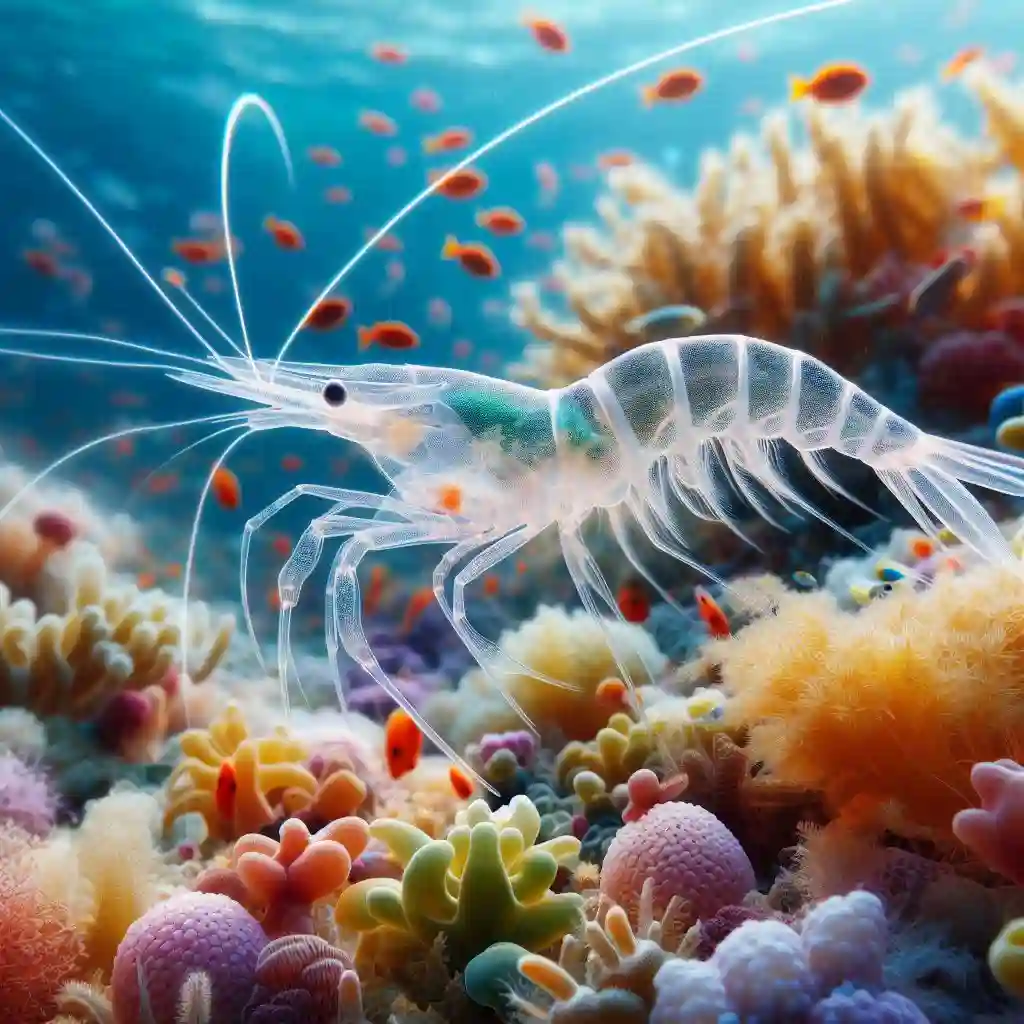
Stage 1: Mating (0-2 days)
- Males perform a courtship dance to attract females and mate.
- Mating typically occurs at night, and the process can take several hours.
Stage 2: Egg Development (2-7 days)
- After mating, the female ghost shrimp will develop eggs in her ovaries.
- The eggs will grow and mature over the next 5-7 days.
Stage 3: Egg Sac Formation (7-10 days)
- The female ghost shrimp will form an egg sac, which will contain the developing eggs.
- The egg sac will grow in size as the eggs develop.
Stage 4: Egg Maturation (10-14 days)
- The eggs will continue to mature and develop within the egg sac.
- The female ghost shrimp will continue to care for the eggs, ensuring their development.
Stage 5: Hatching (14-21 days)
- The eggs will hatch, and the larvae will emerge from the egg sac.
- The larvae will go through several molts as they grow and develop.
Stage 6: Larval Development (21-30 days)
- The larvae will continue to grow and develop, feeding on algae and small invertebrates.
- The larvae will go through several molts as they grow and develop.
Stage 7: Settlement (30-40 days)
- The larvae will settle on a substrate, such as plants or rocks, and begin to metamorphose into juvenile ghost shrimp.
- The juvenile ghost shrimp will continue to grow and develop, eventually reaching adulthood.
Total Pregnancy Duration: 30-40 days
- The entire pregnancy process, from mating to the emergence of juvenile ghost shrimp, can take around 30-40 days.
- However, this duration can vary depending on factors such as water quality, nutrition, and genetics.
Caring for Pregnant Ghost Shrimp: Tips and Best Practices

1. Provide a suitable environment:
- Maintain a stable water temperature between 22-25°C (72-77°F).
- Ensure good water circulation and oxygenation.
- Provide plenty of hiding places, such as plants, rocks, and driftwood.
2. Nutrition and feeding:
- Offer a varied diet that includes algae, vegetables, and commercial shrimp food.
- Feed them 2-3 times a day, only as much as they can consume within 1-2 hours.
- Avoid overfeeding, which can lead to water quality issues.
3. Water quality maintenance:
- Perform regular water changes (10-20% every week) to maintain optimal water quality.
- Monitor water parameters, such as ammonia, nitrite, and nitrate levels.
- Maintain a stable pH and water hardness.
4. Reduce stress:
- Avoid sudden changes in water temperature, pH, or other water parameters.
- Minimize handling and disturbance of the shrimp.
- Provide plenty of hiding places and visual barriers to reduce stress.
5. Monitor health:
- Regularly inspect the shrimp for signs of disease or stress.
- Quarantine and treat any affected shrimp promptly.
- Monitor the shrimp’s behavior, appetite, and overall health.
6. Provide calcium supplements:
- Add calcium-rich supplements, such as crushed eggshells or cuttlebone, to support shell growth and development.
7. Maintain a clean tank:
- Regularly clean the tank and decorations to prevent the buildup of debris and bacteria.
- Remove any dead or decaying matter promptly.
8. Avoid overcrowding:
- Keep the shrimp population low to prevent stress and ensure each individual has enough space and resources.
9. Monitor for pests:
- Regularly inspect the tank for signs of pests, such as snails or planarians.
- Take prompt action to eliminate any pests that may be present.
10. Be patient:
- Breeding ghost shrimp can be a slow process, and it may take several attempts to achieve success.
- Be patient and persistent, and don’t hesitate to seek advice from experienced breeders or online resources.
Common Health Issues in Pregnant Ghost Shrimp: Prevention and Treatment
1. Fungal Infections:
- Cause: Poor water quality, overfeeding, and inadequate tank maintenance.
- Prevention: Maintain good water quality, avoid overfeeding, and perform regular water changes.
- Treatment: Use antifungal medications, improve water quality, and increase water changes.
2. Bacterial Infections:
- Cause: Poor water quality, overfeeding, and inadequate tank maintenance.
- Prevention: Maintain good water quality, avoid overfeeding, and perform regular water changes.
- Treatment: Use antibacterial medications, improve water quality, and increase water changes.
3. Parasitic Infections:
- Cause: Introducing infected shrimp or contaminated food.
- Prevention: Quarantine new shrimp, use a varied diet, and avoid feeding live foods.
- Treatment: Use antiparasitic medications, improve water quality, and increase water changes.
4. Nutritional Deficiencies:
- Cause: Inadequate diet, lack of calcium, and poor water quality.
- Prevention: Provide a varied diet, supplement with calcium, and maintain good water quality.
- Treatment: Improve diet, add calcium supplements, and maintain good water quality.
5. Stress and Molting Issues:
- Cause: Poor water quality, sudden changes, and inadequate hiding places.
- Prevention: Maintain good water quality, avoid sudden changes, and provide plenty of hiding places.
- Treatment: Improve water quality, reduce stress, and provide a stress-free environment.
6. Egg Binding:
- Cause: Poor water quality, inadequate calcium, and genetic predisposition.
- Prevention: Maintain good water quality, provide calcium supplements, and select healthy breeding stock.
- Treatment: Improve water quality, add calcium supplements, and consider separating the affected shrimp.
7. Shell Rot:
- Cause: Poor water quality, inadequate calcium, and bacterial infections.
- Prevention: Maintain good water quality, provide calcium supplements, and avoid bacterial infections.
- Treatment: Improve water quality, add calcium supplements, and use antibacterial medications.
Raising Healthy Ghost Shrimp Larvae: A Step-by-Step Guide
Step 1: Breeding and Egg Collection
- Breed ghost shrimp and collect eggs in a separate container.
- Use a breeding tank with a mesh bottom to allow the eggs to fall through and collect them in a separate container.
Step 2: Incubation
- Place the collected eggs in a separate container filled with dechlorinated water.
- Maintain a water temperature of around 22-25°C (72-77°F) and a pH of 6.5-7.5.
- Monitor the eggs for signs of fungal or bacterial infections.
Step 3: Hatching
- Wait for the eggs to hatch, which typically takes around 14-21 days.
- Monitor the larvae for signs of hatching, such as the appearance of tiny shrimp-like creatures.
Step 4: Larval Development
- Once hatched, the larvae will go through several molts as they grow and develop.
- Provide a diet of algae and small invertebrates, such as brine shrimp or daphnia.
- Maintain good water quality and monitor the larvae for signs of disease or stress.
Step 5: Settlement
- As the larvae grow, they will begin to settle on a substrate, such as plants or rocks.
- Provide a suitable substrate for the larvae to settle on and begin their metamorphosis into juvenile ghost shrimp.
Step 6: Juvenile Development
- Once settled, the juvenile ghost shrimp will begin to grow and develop.
- Continue to provide a varied diet and maintain good water quality.
- Monitor the juveniles for signs of disease or stress and take prompt action if necessary.
Step 7: Maturation
- As the juveniles grow, they will eventually mature into adult ghost shrimp.
- Continue to provide a varied diet and maintain good water quality.
- Monitor the adult shrimp for signs of disease or stress and take prompt action if necessary.
FAQs
Q: What is the lifespan of ghost shrimp?
A: The lifespan of ghost shrimp can vary depending on factors such as diet, water quality, and genetics. On average, ghost shrimp can live for around 1-2 years in captivity.
Q: How often should I feed my ghost shrimp?
A: Ghost shrimp are omnivores and require a varied diet. Feed them 2-3 times a week, only as much as they can consume within 1-2 hours.
Q: What is the ideal water temperature for ghost shrimp?
A: The ideal water temperature for ghost shrimp is between 22-25°C (72-77°F).
Q: How do I prevent fungal infections in my ghost shrimp?
A: To prevent fungal infections, maintain good water quality, avoid overfeeding, and ensure good water circulation.
Q: Can I keep ghost shrimp with other shrimp?
A: Yes, ghost shrimp can be kept with other shrimp species, but it’s essential to ensure compatibility and provide a suitable environment.
Q: How do I breed ghost shrimp?
A: To breed ghost shrimp, provide a suitable environment, maintain good water quality, and ensure a varied diet. Separate the male and female shrimp and provide a suitable breeding tank.
Q: How long does it take for ghost shrimp to breed?
A: Ghost shrimp can breed within 2-3 weeks of mating, and the female shrimp will carry the eggs for around 2-3 weeks before hatching.
Q: How do I care for ghost shrimp eggs?
A: To care for ghost shrimp eggs, maintain good water quality, provide a suitable environment, and ensure a varied diet.
Q: How long do ghost shrimp larvae take to hatch?
A: Ghost shrimp larvae typically take around 14-21 days to hatch.
Q: How do I care for ghost shrimp larvae?
A: To care for ghost shrimp larvae, maintain good water quality, provide a suitable environment, and ensure a varied diet.
Q: How long do ghost shrimp larvae take to settle?
A: Ghost shrimp larvae typically take around 7-14 days to settle on a substrate.
Q: How do I care for juvenile ghost shrimp?
A: To care for juvenile ghost shrimp, maintain good water quality, provide a suitable environment, and ensure a varied diet.
Q: How long do ghost shrimp take to mature?
A: Ghost shrimp typically take around 2-3 months to mature.
Q: Can I keep ghost shrimp in a community tank?
A: Yes, ghost shrimp can be kept in a community tank with other peaceful fish and invertebrates.
Q: How do I prevent ghost shrimp from escaping?
A: To prevent ghost shrimp from escaping, ensure the tank is well-sealed, and the lid is secure.
Q: Can I keep ghost shrimp in a small tank?
A: Yes, ghost shrimp can be kept in a small tank, but ensure it is well-maintained and provides a suitable environment.
Q: How do I care for ghost shrimp in a small tank?
A: To care for ghost shrimp in a small tank, maintain good water quality, provide a suitable environment, and ensure a varied diet.
Q: Can I keep ghost shrimp with other shrimp species?
A: Yes, ghost shrimp can be kept with other shrimp species, but ensure compatibility and provide a suitable environment.
Q: How do I care for ghost shrimp with other shrimp species?
A: To care for ghost shrimp with other shrimp species, maintain good water quality, provide a suitable environment, and ensure a varied diet.
Q: Can I keep ghost shrimp in a cold water tank?
A: No, ghost shrimp require warm water and cannot thrive in cold water.
Q: How do I care for ghost shrimp in a cold water tank?
A: To care for ghost shrimp in a cold water tank, ensure the tank is well-maintained, and the shrimp are provided with a suitable environment and diet.
Q: Can I keep ghost shrimp in a freshwater tank?
A: Yes, ghost shrimp can be kept in a freshwater tank, but ensure the tank is well-maintained and provides a suitable environment.
Q: How do I care for ghost shrimp in a freshwater tank?
A: To care for ghost shrimp in a freshwater tank, maintain good water quality, provide a suitable environment, and ensure a varied diet.
Q: Can I keep ghost shrimp in a saltwater tank?
A: No, ghost shrimp are freshwater shrimp and cannot thrive in saltwater.

Hello, I’m Aria Cooper, the heart and soul behind Swimmy Buddies. As a devoted fish aficionado, I share my aquatic adventures and expertise to inspire your own underwater explorations. 🐠🌊

